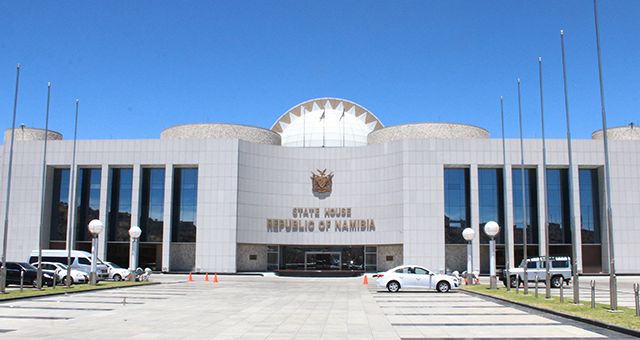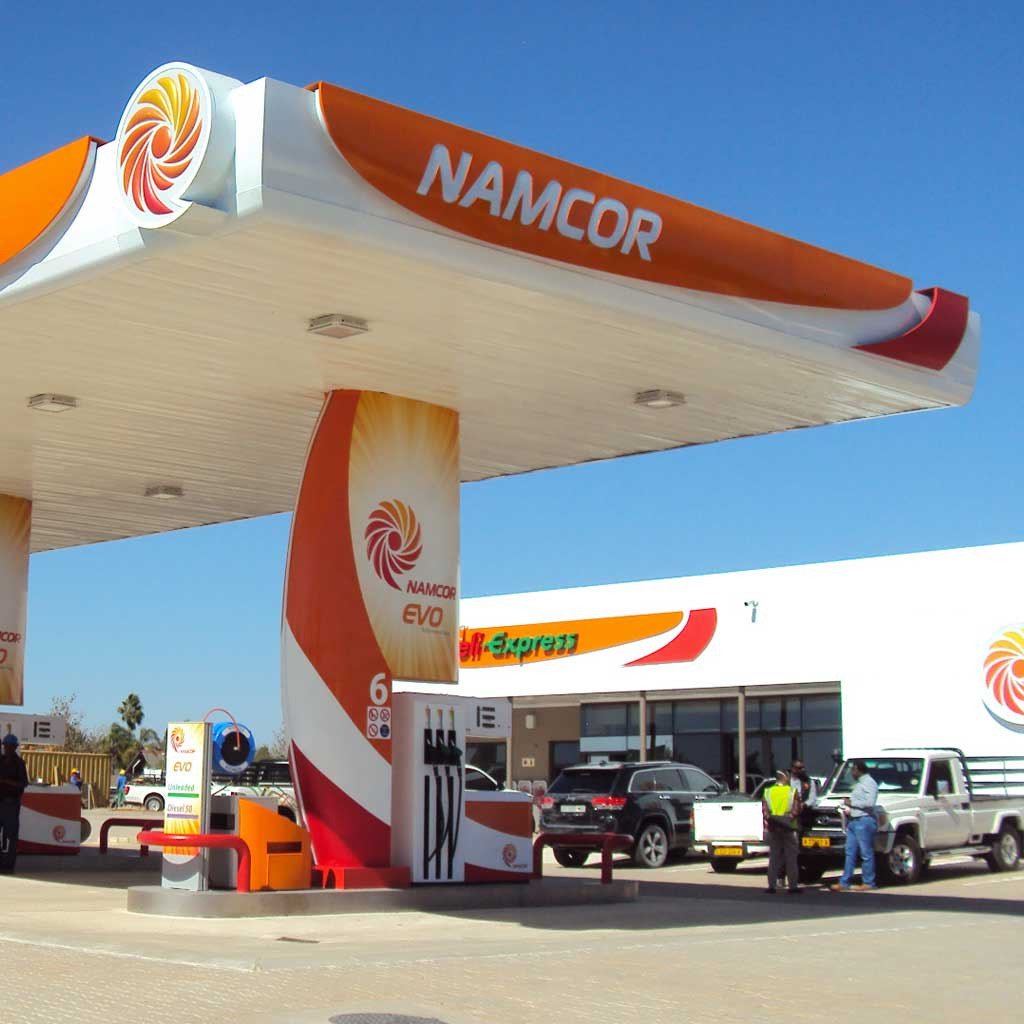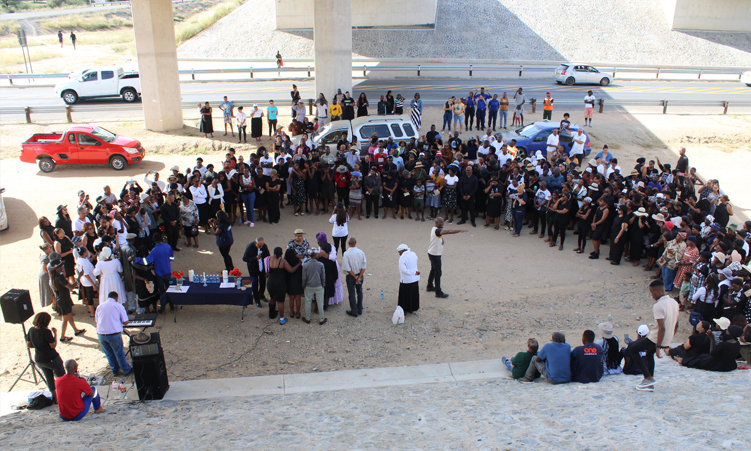TWO desert-dwelling black rhino have settled into their new home in the Â’¡Khoadi //Hôas Conservancy, a month after they were translocated from a nearby tourism concession.
Meanwhile, state-of-the-art radio transmitters were inserted into the horns of 24 rhino in the Torra Conservancy and Palmwag concession in the Kunene Region. An animated Bob ‡Guibeb, administrative head of ‡Khoadi //Hôas Conservancy, told The Namibian last week that the two bulls – three-year-old HO and eight-year-old Zinka – are exploring their habitat and have adapted well to their new environment.”They are closely monitored by our best environmental shepherds and experienced staff from Save the Rhino Trust (SRT) and the conservancy-owned Grootberg Lodge” he said.‡Khoadi //Hôas lies east of Kamanjab, incorporating the Grootberg Mountain and a series of breathtaking valleys.As one of the oldest conservancies in Namibia – it was gazetted in 1998 – residents have worked with game guards to curb poaching, resulting in increased game numbers.Rhinos previously occurred in the area and further translocations of cows are on the cards, should the two bulls adapt well to the area.The Ministry of Environment and Tourism’s rhino co-ordinator, Pierre du Preez, said the operation formed part of the implementation of the National Black Rhino Strategy, of which a custodianship programme formed one component.One criterion for rhino relocations is to restore the species to areas in Kunene where they historically occurred.Custodianship involves commercial farmers and communities meeting criteria on the conservation and protection of this flagship species.In return, rhinos loaned to farmers and conservancies are a drawcard for tourists, creating revenue.The Ministry and the Save the Rhino Trust (SRT) started consultations with rhino stakeholders in the region in 2002 and the recent operations were discussed at a meeting last year.It was pointed out that rhinos in the Palmwag concession were not reproducing, as the population had reached and even exceeded recommended carrying capacities in some areas.‡Khoadi //Hôas was chosen based on the recommendations of a comprehensive feasibility study.This gauged community perspectives about rhino reintroductions, assessed habitat suitability and helped determine the area’s safety and security.Translocated at the end of March, HO and Zinka will be given at least three months to habituate to their new environment before the conservancy-owned Grootberg Lodge can offer rhino-tracking – either on foot or horseback – as a tourist activity.The rhinos were moved as part of a joint operation by the Ministry, SRT, Wilderness Safaris, involved conservancies and other regional stakeholders that also fitted radio transmitters the size of cigarette lighters into the horns of 24 rhino.Electronic tracking will greatly speed up the location of animals, leading to more effective protection and monitoring.The devices will also make it easier for trackers to locate animals for tourists.Funds for the operation were provided through the Game Products Trust Fund and Integrated Community-Based Ecosystem Management.Wilderness Wildlife Trust was also a sponsor.During the operation, the SRT piloted its fixed-wing aircraft over the area in search of rhinos.Once an animal was spotted, the helicopter and ground teams were alerted.Animals were then darted from a helicopter by experienced veterinarian Dr Pete Morkel before the ground team was guided in to assist.Thanks to expert work by trackers familiar with the difficult terrain, the costs of the operation were kept to a minimum.Ace trackers from SRT’s camel team included Ludwig Ganaseb, Hans Ganaseb, Josef Sanib and Dansiki Ganaseb.They were co-ordinated by the Namibia Nature Foundation’s (NNF) Environmentalist of 2005, Simpson Uri-Khob.Lesley Karutjaiva led a second group with Joseph Karuhama and Zahanguka ‘Himba’ Tjivira.Pete Hitchens of South Africa took dentition moulds of animals to determine their ages while training Ministry and SRT staff in the use of dentition to determine the age of animals.All information was added to identity kits for each animal.A student completing his MSc will monitor rhinos in conjunction with SRT.Du Preez pointed out that rhino monitoring is expensive and difficult due to the remoteness of the area.”The animals will now also be regularly monitored from the air.”Du Preez hinted that future translocations to other conservancies are on the cards for 2007 and 2008.* Linda Baker is an environmental consultantAn animated Bob ‡Guibeb, administrative head of ‡Khoadi //Hôas Conservancy, told The Namibian last week that the two bulls – three-year-old HO and eight-year-old Zinka – are exploring their habitat and have adapted well to their new environment.”They are closely monitored by our best environmental shepherds and experienced staff from Save the Rhino Trust (SRT) and the conservancy-owned Grootberg Lodge” he said.‡Khoadi //Hôas lies east of Kamanjab, incorporating the Grootberg Mountain and a series of breathtaking valleys.As one of the oldest conservancies in Namibia – it was gazetted in 1998 – residents have worked with game guards to curb poaching, resulting in increased game numbers.Rhinos previously occurred in the area and further translocations of cows are on the cards, should the two bulls adapt well to the area.The Ministry of Environment and Tourism’s rhino co-ordinator, Pierre du Preez, said the operation formed part of the implementation of the National Black Rhino Strategy, of which a custodianship programme formed one component.One criterion for rhino relocations is to restore the species to areas in Kunene where they historically occurred.Custodianship involves commercial farmers and communities meeting criteria on the conservation and protection of this flagship species.In return, rhinos loaned to farmers and conservancies are a drawcard for tourists, creating revenue.The Ministry and the Save the Rhino Trust (SRT) started consultations with rhino stakeholders in the region in 2002 and the recent operations were discussed at a meeting last year.It was pointed out that rhinos in the Palmwag concession were not reproducing, as the population had reached and even exceeded recommended carrying capacities in some areas.‡Khoadi //Hôas was chosen based on the recommendations of a comprehensive feasibility study.This gauged community perspectives about rhino reintroductions, assessed habitat suitability and helped determine the area’s safety and security.Translocated at the end of March, HO and Zinka will be given at least three months to habituate to their new environment before the conservancy-owned Grootberg Lodge can offer rhino-tracking – either on foot or horseback – as a tourist activity.The rhinos were moved as part of a joint operation by the Ministry, SRT, Wilderness Safaris, involved conservancies and other regional stakeholders that also fitted radio transmitters the size of cigarette lighters into the horns of 24 rhino.Electronic tracking will greatly speed up the location of animals, leading to more effective protection and monitoring.The devices will also make it easier for trackers to locate animals for tourists.Funds for the operation were provided through the Game Products Trust Fund and Integrated Community-Based Ecosystem Management.Wilderness Wildlife Trust was also a sponsor.During the operation, the SRT piloted its fixed-wing aircraft over the area in search of rhinos.Once an animal was spotted, the helicopter and ground teams were alerted.Animals were then darted from a helicopter by experienced veterinarian Dr Pete Morkel before the ground team was guided in to assist.Thanks to expert work by trackers familiar with the difficult terrain, the costs of the operation were kept to a minimum.Ace trackers from SRT’s camel team included Ludwig Ganaseb, Hans Ganaseb, Josef Sanib and Dansiki Ganaseb.They were co-ordinated by the Namibia Nature Foundation’s (NNF) Environmentalist of 2005, Simpson Uri-Khob.Lesley Karutjaiva led a second group with Joseph Karuhama and Zahanguka ‘Himba’ Tjivira.Pete Hitchens of South Africa took dentition moulds of animals to determine their ages while training Ministry and SRT staff in the use of dentition to determine the age of animals.All information was added to identity kits for each animal.A student completing his MSc will monitor rhinos in conjunction with SRT.Du Preez pointed out that rhino monitoring is expensive and difficult due to the remoteness of the area.”The animals will now also be regularly monitored from the air.”Du Preez hinted that future translocations to other conservancies are on the cards for 2007 and 2008.* Linda Baker is an environmental consultant
Stay informed with The Namibian – your source for credible journalism. Get in-depth reporting and opinions for
only N$85 a month. Invest in journalism, invest in democracy –
Subscribe Now!










